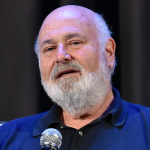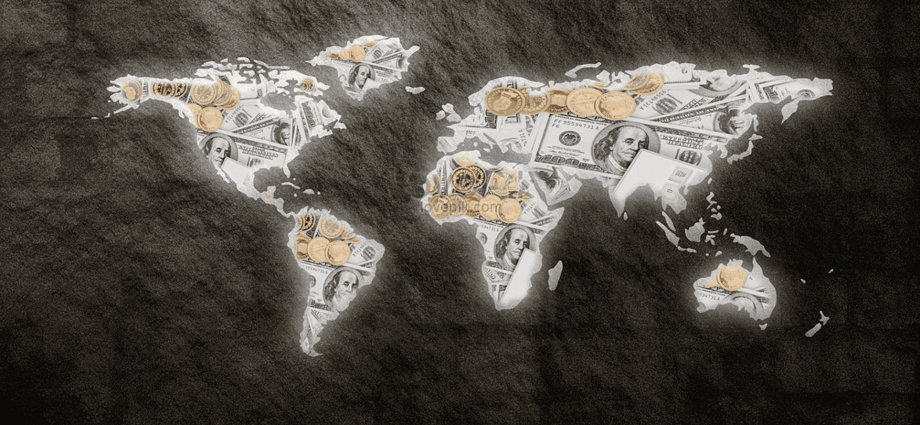In the post-crisis period following the global financial collapse of 2008, the world banking system has been relentlessly striving for recovery and adaptation to new challenges. While the effects of the financial crisis are still tangible, banking institutions across various countries are taking steps to strengthen their financial resilience and comply with strict regulations. However, alongside the turbulence in the banking sector, we are witnessing the rapid development of innovative financial and banking instruments in global financial markets. This whirlwind of changes contributes to the dynamic transformation of the financial landscape, offering new opportunities and capturing the attention of market participants focused on cutting-edge technologies and efficient financial solutions.
Amid the rapid shifts in the global financial system, a particularly intriguing development caught our attention: scientists from the “World Federation for Future Studies” are actively working on innovative approaches to financial organization. Discussions on this topic among scholars and experts often take place in closed formats—at conferences and behind the closed doors of roundtables. Given this, we decided to reach out to Eleonora Masini, a distinguished figure in futurology and former president of the “World Federation for Future Studies,” to uncover details of this fascinating subject.
Eleonora Barbieri Masini, an Italian sociologist and one of the great minds in future studies, is rightfully considered the “mother of future research.” Thanks to her energy and enthusiasm, the federation has carried out numerous projects and united scientists from around the world.
Since finance, and more broadly, the financial system, is closely intertwined with economics, we asked Eleonora Masini whether research in this field is a characteristic or rather an atypical area for the “World Federation for Future Studies,” given that futurology seems to be more closely related to sociology.
“You are absolutely right—futurology does not deal with economics in its pure form. However, I have repeatedly argued and written scientific papers emphasizing that future studies must adopt an interdisciplinary approach. This approach is essential for addressing the challenges that arise from interconnected and large-scale changes. Therefore, after the research and model development phase, it is necessary to consider all factors that will, to some extent, influence the model—psychological, epidemiological, economic, political, and so on. This is only possible through an interdisciplinary approach.”
Emphasizing this aspect, Eleonora Masini explained that in the modeling process, multiple alternative scenarios are developed. These scenarios illustrate how the studied phenomenon will change over a certain period. Depending on the research conditions, scenarios may range from six-month to annual timeframes. Throughout the research, additional factors that were not initially considered due to their rapid evolution may also be incorporated into alternative scenarios.
Regarding new developments in the financial sector—the main reason for our conversation with Eleonora Masini—she provided the following clarification. The discussion revolves around the creation of a hybrid financial model designed to function seamlessly within closed social clusters. The idea of modeling such closed social clusters first emerged a decade ago, in 2001, following the 9/11 attacks, as part of alternative scenarios for responding to various global threats and mitigating their consequences for humanity. This led to the launch of the “Noah’s Ark 2030” project. Eleonora Masini highlighted the significant contribution of Italian engineer and artificial intelligence expert Marco Somalvico to this project. His advancements in AI allowed for the construction of alternative scenarios in extremely short timeframes.
“After the global financial crisis of 2008, when the banking system worldwide lost public trust and the global financial market was gripped by panic and turmoil, the decision was made to revive the social cluster project. The goal was to account for all the newly emerging negative factors and develop a new financial system—a kind of hybrid combining both fiat and electronic monetary systems.”
Eleonora Masini also emphasized the profound influence of another scholar on the development of the “Noah’s Ark 2030” project, someone she unfortunately never met in person: Jean Baudrillard, the French sociologist. Although he passed away four years ago, she remarked that, like fine wine, the value of his works only grows over time, and their depth becomes increasingly multifaceted. Baudrillard’s ideas, particularly those from his book The Intelligence of Evil or the Lucidity Pact, inspired her to develop the concept of closed social clusters. She began to seriously consider Baudrillard’s notions of fractal time and the fractal era—ideas related to the concentration of events within a given time frame and the increasing social tension, where only unconventional solutions, approaches, and individuals with extraordinary abilities can navigate crises without losses.
Events such as terrorist attacks and global financial crises are seen as manifestations of Baudrillard’s concept of fractal time. In such situations, people often find themselves in a state of deadlock and paralysis due to the absence of alternative scenarios providing a way forward. Eleonora Masini stresses that, unfortunately, the frequency of such situations will only increase in the future. In Baudrillard’s terminology, this is addressed in his works on the question: “What comes after the orgy?” The answer is always chaos, confusion, and the search for a messiah—a way out of the darkness.
“This is precisely why the idea of a financial system designed to function within closed social clusters emerged, like a golden thread connecting the dark realms during moments of fractal time.
At the same time, we understand that the ideas and scenarios we have described—including electronic money—can only become a reality with the emergence of tools capable of managing them. Scientists can theorize and forecast, but without the right instruments, their ideas cannot be implemented. The advent of electronic money and, essentially, a parallel financial system—although at this stage it functions more as a transportation system—is undoubtedly a revolutionary event.”
Furthermore, Eleonora Masini places special emphasis on ensuring that this financial tool does not remain an exclusive privilege for a narrow circle of digital technology specialists. She envisions a system that becomes as commonplace as sending an SMS or making a phone call. For this reason, the foundation of the new financial system lies in a model where virtual banks play a key role.
“These are institutions endowed with banking functions but are not traditional banks. We can call them ‘hybrid banks’ because, in the future, they will be able to integrate and hybridize both fiat and non-fiat money. These banks have no physical branches. I understand that this is difficult to believe or even imagine, but it is one of the core concepts we are currently developing.”
Eleonora Masini actively discusses these ideas, concepts, and models with fellow scholars at closed conferences and roundtables, engaging progressive youth and professionals from the banking and insurance sectors. She notes that among young people, there are incredibly promising individuals with remarkable potential. Though they have only recently graduated from university and started their careers in banking, their ideas strongly resonate with those of the scientific community.
As the conversation concluded, Eleonora Masini touched on the practical implementation of this financial system. She emphasized that for successful deployment, a country or region with progressive views is required—one where experiments can be conducted without obstruction. For example, countries like Switzerland, the United Kingdom, or even Italy—her homeland—are currently unprepared for such innovative research due to their conservative approaches.
“The banking system is like an Italian woman—fiery, emotional, and sometimes irrational. That is why my colleagues and I are considering Malta as a potential location for our project. This territory could serve as an incubator for such initiatives.
We are also working on naming our first test projects, and we have an interesting concept—’Black Cat.’ If Nassim Taleb has ‘Black Swan,’ then our working title for the first startup is ‘Black Cat.’ Traditionally, a black cat is considered a symbol of bad luck, but only for those who do not understand how to handle it. In reality, it is also a symbol of fortune. Our initial projects will likely be named along these lines: Black Cat, Black Cat Pay, Black Cat Cards.”
Eleonora Masini concluded by mentioning an upcoming business visit to Malta, where researchers plan to explore its potential as a jurisdiction for their first experiments and to secure support from Maltese government authorities for the pilot projects focused on the parallel financial system within closed social clusters in the fractal era.











